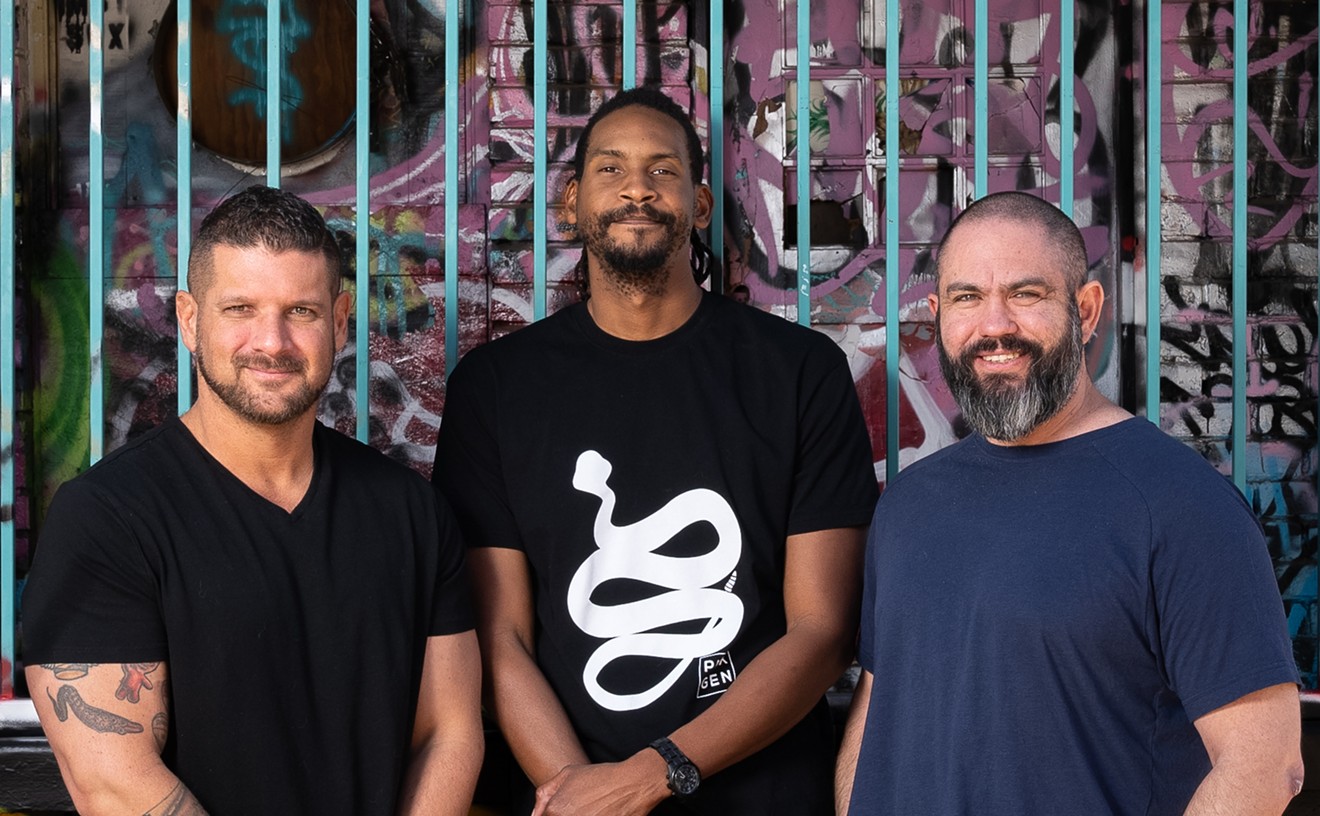As played by Lili Taylor in I Shot Andy Warhol, the debut feature of Brit TV documentarian Mary Harron, Solanas was not the usual Warhol hanger-on. The self-described "butch dike" and radical feminist polemicist wasn't star-struck, and she wasn't into glamour or partying--she saw her association with Warhol simply as a means to an end.
Harron's film is an absorbing, queasily funny spectacle, even if the director never quite figures out what she wants to tell us about her subject. Harron lovingly re-creates the wild, cheerfully decadent party scene at the Factory, presided over by the strange and spectral Warhol (Jared Harris), contrasts it with Solanas' sad, sordid world, and hopes this will amount to some sort of drama. Mainly because of the powerful performances of Taylor and Harris, it comes close enough.
Solanas, an Atlantic City native, studied psychology at the University of Maryland. After college, she eked out a subsistence in New York as a hooker and panhandler, but her ambitions were as a writer of revolutionary literature. Her two "major works" were Up Your Ass, an antimale play, and a tract called The SCUM Manifesto, which on page one neatly outlines the aims of the Society for Cutting Up Men (she, of course, was the only member of this "society"): ". . . there remains to civic-minded, responsible, thrill-seeking females only to overthrow the government, eliminate the money system, institute complete automation and destroy the male sex."
Solanas managed to make a connection, however tenuous, with Warhol, whom she hoped would produce Up Your Ass. Warhol used her as an actress in his 1967 film I, a Man, but took little further interest in her. The following year, she followed him into his office, shot him three times, and put a bullet in one of his assistants as well. Though probably not planned as one, it proved to be a solid publicity move: She made headlines, and The SCUM Manifesto was published by Olympia Press the same year. Solanas spent three years in a hospital for the criminally insane, and the rest of her life in and out of homelessness (she was in a San Francisco welfare hotel when she died of pneumonia in 1989).
Harron, who also wrote the script, zips through this curious story so efficiently that she is left with plenty of time for lengthy digressions into the Warhol party scene, which is what seems to principally interest her anyway. Harris (Richard Harris' son) makes a marvelously wispy Warhol, getting across the sense of Warhol as a knowingly naked Emperor, slyly putting everyone on. Warhol enthusiasts, if few others, will get a kick out of the gallery of Warhol's entourage, well-impersonated by a string of bit players: Michael Imperioli as Ondine, Tahnee Welch as Viva, Donovan Leitch as Gerard Malanga (sans Mary Woronov, alas), Reg Rogers as Paul Morrissey, Coco McPherson as Brigid "Duchess" Berlin and Stephen Dorff, memorable and touching as the transvestite performer "Candy Darling."
Taylor, however, is the best reason to see the film. Good as she's been in other roles, her startling, feral vigor as Solanas is more engaging and memorable than any of her earlier film work. There's a special, surreal poignancy in the scene in which she and Harris' Warhol commune on a couch, plainly uninterested in the hedonistic Factory party teeming around them; two avant-garde wallflowers with God knows what other things on their minds.
At the end of the film, though, we're still left with the question: What are we supposed to think about this woman? The final tag says that The SCUM Manifesto is "now regarded as a feminist classic." Is that how Harron regards it? The book is not easy to find now, but I located a copy (for a measly $3.50!) from a San Francisco firm called AK Press.
It's actually rather well-written; it has flickers of wit that might without undue charity be called Swiftian. Some of it is even, I'm afraid, difficult to argue with. But at the level of its basic premise, it's banal--an attempt to rhetorically work out the grade-school controversy of whether "girls are better than boys." It's an interesting oddity, but if it's a feminist classic, that can only mean that feminist literature is in dire need of more classics.
That Solanas wasn't the genius she supposed herself to be does not, in itself, mean that she shouldn't have a movie made about her, although some might disagree--just as some cineasts got huffy about Ed Wood because its hero wasn't a genius. The marginal can be as fascinating as the important, especially when, as in the case of both Wood and Solanas, they interact with the important. But I Shot Andy Warhol would have been a stronger work if Harron had figured out what, beyond having shot a famous person, made Solanas dramatic. The film is shaped so that, forceful as Taylor's performance is, you can't tell what's going on in Solanas' head--does she actually believe her whacked-out manifesto, or is she a pure hustler?
Or is it possible that Harron is taking Solanas' shooting of Warhol at face value as a revolutionary act? If Harron wasn't so obviously fond of Warhol, you'd almost think she was hinting that by choosing Warhol--a passive, effeminate, monumentally harmless specimen of manhood--as her first victim, Solanas was showing the depth of her commitment to knock out all men (if she'd succeeded in killing him, you can bet the film would have a different spin, even if her book was an undisputed masterpiece). But it seems much more probable that Solanas shot Warhol simply because of what she perceived as an unfairness--if he was ridiculous and rich and famous, why should she be ridiculous and poor and obscure?--M. V. Moorhead
I Shot Andy Warhol:
Directed by Mary Harron; with Lili Taylor, Jared Harris, Stephen Dorff, Michael Imperioli and Tahnee Welch.
Rated










